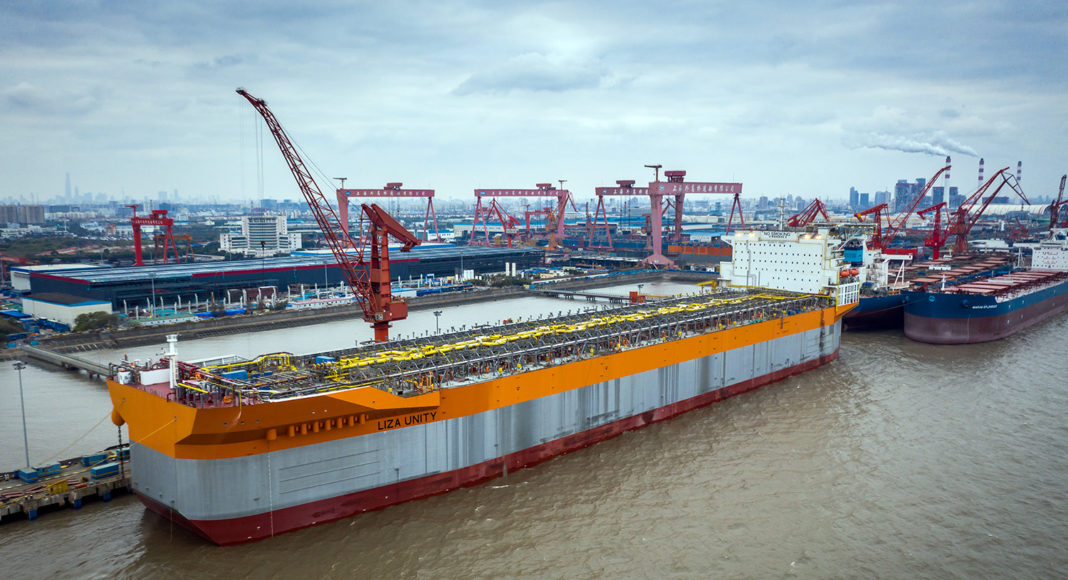2020 was another eventful year for the exploration and production activities offshore Guyana led by U.S. oil major ExxonMobil at the prolific Stabroek block. The year started with Guyana’s first oil lift, the announcement of another discovery in January at the Uaru prospect, and the upgrade in recoverable resources from around 6 billion, to an estimated 8 billion oil equivalent barrels. By the end of the year, two more discoveries would have been made, and an additional 1 billion barrels of oil added, bringing the total estimated recoverable resources to around 9 billion oil equivalent barrels.
But there were significant challenges and setbacks along the way, both on and offshore.
In the first instance, Guyanese went to the polls on March 2 but by the end of the month it became clear that a new government would not be in place any time soon. Added to this, the country recorded its first case of coronavirus just after elections and the outbreak globally was beginning to have a devastating impact on the oil and gas industry.
“Efforts are being made to limit the disruption of the coronavirus to our operations but given the global nature of our operations, travel restrictions have impacted our ability to move workers into Guyana and could impact our ability to maintain normal operations offshore,” Janelle Persaud, ExxonMobil Guyana Public and Government Affairs Advisor told OilNOW at the time.
Then as the company increased oil production in mid-May, it encountered some issues with the gas compressor system during a performance test on the Liza Destiny FPSO. Repairs were initially delayed in order to observe travel restrictions and safety and isolation protocols related to the pandemic. This resulted in a prolonged period of flaring and a curtailment in oil production.
Nevertheless, by June, with the pandemic still raging and the political situation in Guyana rapidly deteriorating, ExxonMobil announced it was able to return to full drill capacity at the Stabroek block.
“We have been able to make adjustments to ensure our workforce remains safe as we maintain some amount of continuity, Deedra Moe, Senior Director of Public and Government Affairs at the time, said. “Operations on two of our drillships, the Stena Carron and the Noble Tom Madden, which were temporarily suspended, are now back to full operations as we are able to increase the number of rotational offshore crew passing through our screening process.”
During this time government approval for the third development at the Stabroek block – Payara – was stalled due to the political crisis and analysts began to sound the alarm that billions of dollars could be potentially lost as a result.
Sustained national, regional and international pressure and a series of court cases finally saw a turnaround in the political situation at the start of August and the winner of the elections was finally declared, paving the way for the new President to be sworn in.
ExxonMobil announced its 17th and 18th discovery at Stabroek block on September 8. Redtail-1 encountered approximately 232 feet (70 meters) of high-quality oil-bearing sandstone and was drilled in 6,164 feet (1,878 meters) of water. Drilling at Yellowtail-2 encountered 69 feet (21 meters) of net pay in newly identified, high-quality oil-bearing reservoirs among the original Yellowtail-1 discovery intervals.
Then on September 30, the long awaited US$9 billion Payara Development Project was approved, making it the largest investment in Guyana’s history.
On December 20, on the occasion of the country’s first anniversary as an oil producer, ExxonMobil announced that it was able to successfully commission the gas injection system on the Liza Destiny FPSO and production had ramped up to the full capacity of 120,000 bpd.
“We are incredibly proud of the tremendous work of our team in overcoming the challenges of the past year and safely bringing us to where we are today,” said ExxonMobil Guyana President Alistair Routledge.
More than 2,100 Guyanese are now supporting activities on and offshore and ExxonMobil and its key contractors have spent over GY $69 billion with more than 700 local companies since 2015.
“Let us join our hands and our hearts in making 2021 the year we leap into a future of prosperity and progress,” Guyana’s President, Dr. Irfaan Ali said in his new year’s message.
High-cost oil producers can lose market share to strong emerging player Guyana – Lisa Viscidi
And the future remains bright for Guyana. Throughout the challenges of 2020, the oil and gas industry remained resilient. The country also received close to US$200 million in revenue from oil production and royalty and this is expected to increase this year.
For its part, ExxonMobil is continuing its search for more hydrocarbons with new campaigns at Hassa-1 at Stabroek block and Bulletwood-1 at the adjacent Canje block. The company has been making an average of 3.6 discoveries per year at Stabroek block since May 2015 when it first discovered oil at the giant Liza field.
Oil production is expected to hit 750,000 bpd by 2026 before crossing the 1 million bpd mark at the end of the decade.




